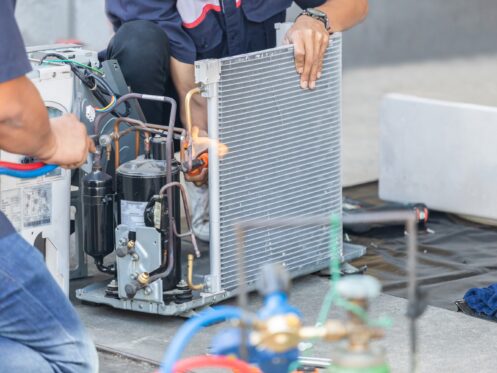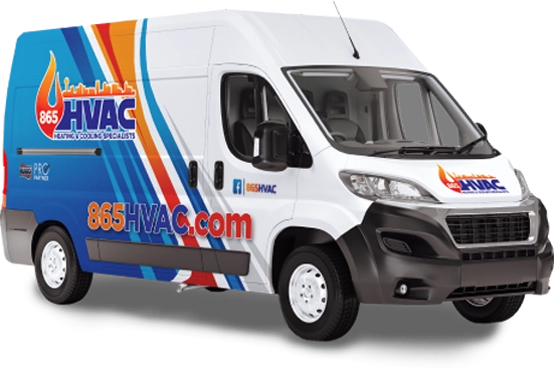If it’s time to upgrade your home’s HVAC system, there are many exciting options. There are also many considerations, including sizing, energy efficiency, and modern features. Let’s explore everything you should know about selecting your next system.
Professional Installation
Professional heater or AC installation is key to maximizing your investment in the short term and over the long term. Get an HVAC installer involved in the process early. An experienced installer can answer your questions and help you explore the latest technologies. That includes dual-fuel heat pumps, an increasingly popular alternative to the traditional AC and furnace pairing. A common question homeowners have is how you know whether an HVAC system is right for your home. Answering that question begins with accurate sizing.
Sizing
The HVAC industry in the U.S. sizes HVAC systems in tonnage, such as 3.0 or 1.5 tons. One ton is equal to 12,000 British thermal units (BTUs). There are general industry guidelines, such as needing 20 BTUs per square foot for cooling and 30-35 BTUs for heating. A more accurate estimate will help ensure lower costs over the life of the equipment.
To achieve these numbers, an installer will perform a load calculation. It will account for your home’s floor plan, square footage, and ceiling heights. An installer can also factor in the building envelope, the local climate, and whether a home gets a lot of direct sunlight. Once you know the precise cooling and/or heating output you need, you can focus on features within that class.
Financing
Another advantage of dealing with a professional installer is financing. Qualified customers have access to flexible payment plans that cover all aspects of the cooling, heating, and ancillary equipment. Installers often have specials available specific to their company or brand partnerships. They can also provide information about local energy incentives.
Ducted vs. Ductless System
A key consideration is whether you want a ducted or ductless HVAC system. Ducted systems include forced-air furnaces, central ACs, and heat pumps. Ductless systems include mini-split ACs, mini-split heat pumps, and hot water and steam boilers. A ducted system is an excellent choice for delivering consistent heating and cooling throughout an entire home.
It’s particularly important in larger homes where ductless systems can be expensive. Ductless systems, on the other hand, are inherently zoned. Zone control is an option for ducted systems, but it’s available as an add-on.
Zone Control
Traditional HVAC systems have single-zone configurations. Raising or lowering the temperature adjusts it for the entire home. Multi-zone configurations let you adjust each zone independently. There are several advantages to this approach. Various areas of your home have different cooling and heating needs.
You can enjoy different settings for your kitchen, living room, home office, and so forth. It’s also a nice feature to have for your bedrooms. You can maintain cool summertime sleeping temperatures without excessively cooling the entire home. In addition to comfort benefits, there are energy efficiency advantages. The Department of Energy (DOE) estimates that zoned systems lower annual energy costs by 30% on average.
Energy-Efficiency Ratings
Energy-efficiency ratings are important because they indicate how much an HVAC system will cost to operate. There are many rating systems, but there are three in particular to be aware of. There’s the seasonal energy efficiency ratio (SEER), heating seasonal performance factor (HSPF), and annual fuel utilization efficiency (AFUE). SEER is a measure of efficiency over a cooling season.
HSPF is a measure of efficiency over a heating season and is specific to heat pumps. AFUE is a measure of heating efficiency that applies to furnaces and boilers. In all three cases, the higher the rating, the more efficient the system and the lower your operating costs.
There’s a caveat that pertains to electric boilers and furnaces. While the industry uses AFUE for them as well, they’re generally at or close to 100% efficient. For these systems, a better way to evaluate operating costs is kilowatt-hours. You’ll find that number on the yellow EnergyGuide label along with other energy efficiency details.
High-efficiency systems will cost more up front. Whether or not the added investment is worth it depends on the long-term savings. This is another reason professional installation is crucial. An HVAC installer will help you find that sweet spot.
ENERGY STAR
The DOE sets energy efficiency minimums for manufacturers. The Environmental Protection Agency (EPA) sets loftier efficiency goals. They aren’t legal requirements, but systems that achieve these goals earn ENERGY STAR certification. The ENERGY STAR label gives consumers confidence, and it’s a key criterion for many energy incentives.
Energy Incentives
Incentives can significantly lower your initial costs and make high-efficiency systems more affordable. There are often tax credits available through the federal government and rebates through state governments. You may also be able to claim rebates from manufacturers, utility companies, retailers, and other local groups.
Smart Features
The DOE encourages all households to have advanced thermostat control. Basic scheduling features can lower annual cooling and heating costs by up to 10%. Smart thermostats provide remote access and control and often have additional advanced features. Notable features for energy savings include energy monitoring, machine learning, and rate awareness.
Many HVAC systems now have onboard smart capabilities. One feature in particular that may shape the industry moving forward is predictive maintenance. Systems with this feature can track performance from moment to moment. If the system begins operating outside normal parameters, it will recognize that and alert you to schedule proactive diagnostic service.
Air Filtration
Central HVAC systems won’t cause air quality issues but can exacerbate them. One consideration is the minimum efficiency reporting value (MERV). The industry uses MERV to rate filter effectiveness. Modern systems generally support between MERV 8 and 13. Opting for a system that allows MERV-13 filters can make a significant difference in air quality. For active air purification, consider installing an in-duct air purifier and germicidal light.
Noise Output
Modern mini-split systems generally produce between 20 and 35 decibels (dB), which is equivalent to a whisper. Quiet mode is a popular option for bedroom use. Central systems generally produce between 50 and 70 dB, but that’s offset by their distance from the living area. If you’re concerned about noise, target a central system closer to the lower end of that range.
Humidity Control
Relative humidity (RH) is an important factor in home comfort. The EPA advises no less than 30% in winter and no more than 60% in summer. Many people are most comfortable somewhere between 40% and 55%. Furnaces specifically can cause low RH as a byproduct of heating the home. A bypass humidifier as an add-on to the furnace will offset that problem. If low RH issues in a home extend beyond the furnace, a whole-house humidifier is an option. For high RH in summer, a whole-house dehumidifier is the solution. A dehumidifier will also make an AC more efficient and lower wear and tear on it.
New HVAC System Installation in the Greater Knoxville Area
865 HVAC is a local, family heating and cooling services business located in Knoxville, TN. Our company has decades of industry experience. Our technicians install all brands and both ducted and ductless HVAC systems.
We install smart thermostats, dehumidifiers, humidifiers, and much more. Our company offers free in-person installation consultations and quotes, and we have financing available for qualified customers. Call today or contact us online to learn more.


